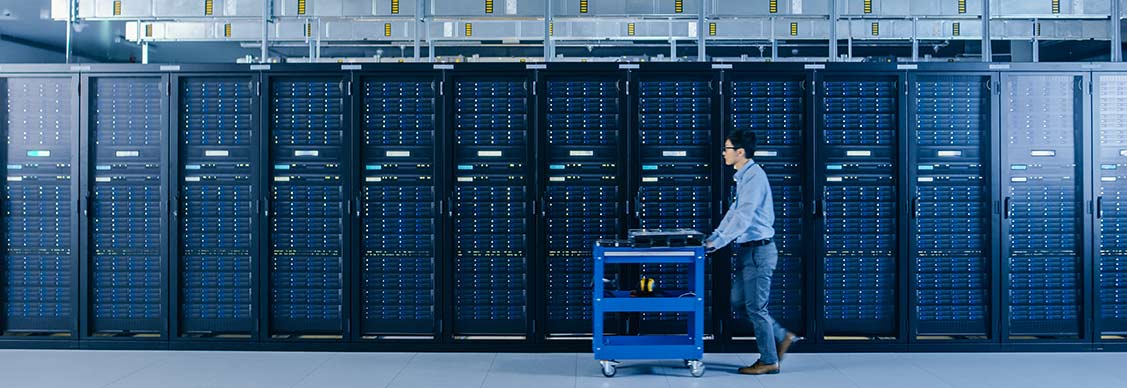Data center development rises to feed online boom
As people in Asia flock online, developers are racing to build new data centers
The rise in data consumption, largely driven by remote work and e-commerce, has sparked a boom in data center development across Asia Pacific.
Take India, where data center capacity rose 92 percent in the first half of 2021, according to JLL. By 2023, India’s total power capacity for data centers is expected to double from 499 megawatts to 1,007 megawatts.
In Australia, the fastest-growing data center market in the region, space under development will nearly double to 417,000 square meters over the next three years, compared with 850,000 square meters across Europe, according to research from UK consultancy DataCentrePricing.
The heightened need for data centers can be attributed in part to the pandemic, which fueled the rise of e-commerce, remote work, and cloud computing — all of which transmit large amounts of data through a data center. But not all markets have a sufficient number of such facilities to serve the growing demand.
“The current demand-supply imbalance in data centers suggests there are untapped opportunities for investors and operators to augment data center capacity, especially in the region’s underserved, data-starved markets,” says Roddy Allan, Chief Research Officer, Asia Pacific, JLL. “Data centers are entering the mainstream.”
Development is already underway. In the Philippines, data center company Digital Edge recently formed a US$100 million joint venture with a local real estate firm to build a 10 megawatt data center in Manila to supply the growing server-hosting needs of the technology sector.
Meanwhile, independent data center operator Mantra Data Centers pledged US$1 billion to develop data centers in Mumbai, Chennai, Bangalore, Hyderabad, and Kolkata, where digital adoption is gathering pace. And earlier this year, property developer CapitaLand also made its first foray into data centers with its RMB 3.66 billion (US$560 million) acquisition of a hyperscale data center facility in Shanghai, China.
“The sheer scale of China, India, and Indonesia — three of the world’s four most populous countries — means that they are likely to be at the forefront of the regional growth story,” says Allan.
Looking for more insights? Never miss an update.
The latest news, insights and opportunities from global commercial real estate markets straight to your inbox.
Supporting factors
Given the scale of what is required, governments are supporting the sector’s expansion.
In India, the government introduced a Rs 12,000 crore (US$1.58 billion) incentive scheme to encourage companies to set up data centers. It is also planning to provide up to 4 percent of capital investment, along with real estate support and faster clearances, to attract companies.
Similarly, the Indonesian government is specifically targeting data center developments from 150 megawatts to 400 megawatts in Batam’s 167-hectare Nongsa Digital Park, which was designated as a special economic zone to support the country’s digitization roadmap.
Private sector partnerships are also contributing to the expansion, Allan says.
For instance, LOGOS and Pure Data Centres are working together to design, build, and operate new data centers in Asia Pacific, while in June Singapore sovereign wealth fund GIC entered joint ventures with global data center operator Equinix to expand its data center portfolio in the region and globally. The partnerships will add US$3.9 billion to Equinix’s data center investments globally, including six data centers in Japan.
Despite a clear need for data centers to support booming digital economies, market-specific challenges such as data localization laws and other regulations could hinder progress.
In China, for instance, the new Data Security Law governs how companies manage and store data, and bars data transfer across borders without regulatory approval. For data centers operating there, ensuring compliance with legal and regulatory requirements complicates operations due to the government’s increased oversight on its data, which has since driven tech giants Yahoo and LinkedIn out of the country.
Investment Opportunities
Behind the rise of data centers
However, this has not dampened the region’s data center boom, which comes amid a broader push from investors to diversify their real estate portfolios.
The growth in investor and occupier demand for data centers in Asia Pacific will continue in 2022, with more opportunities set to emerge in the asset class with strong growth potential, according to JLL’s Asia Pacific Outlook 2022 report.
With companies pivoting toward hybrid and remote work, data consumption will likely continue to rise. According to JLL research, up to 91 percent of companies expect to spend most on audio-visual office components next year as video conferencing will become an important feature for the future workplace.
Factors such as smartphone and e-commerce adoption, social media, e-gaming, streaming and big data applications, will likewise consume more data and pile pressure on data centers that organize, process, store, and distribute data for these services.
“The appetite for data will only surge in the future, which underscores the pressing need for more data centers now to ensure the region and the world stay digitally connected,” Allan says.
Contact Roddy Allan
Chief Research Officer, JLL Asia PacificWhat’s your investment ambition?
Uncover opportunities and capital sources all over the world and discover how we can help you achieve your investment goals.




